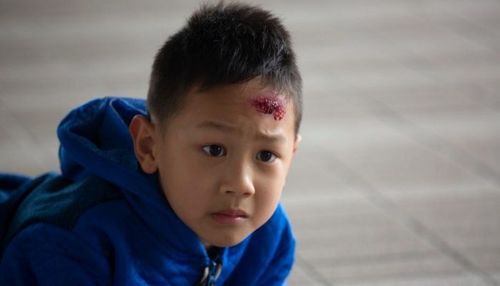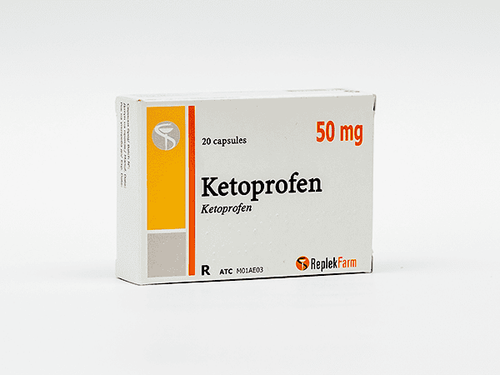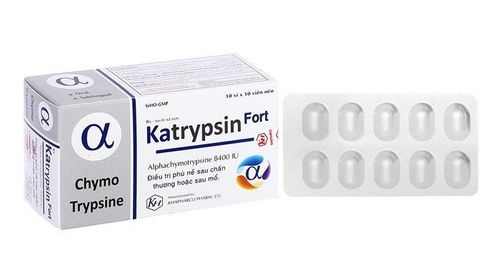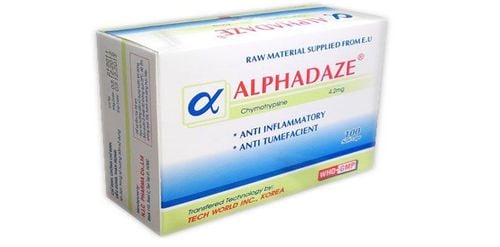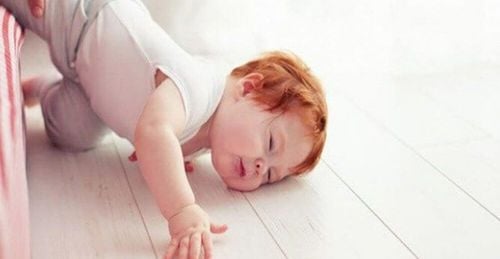This is an automatically translated article.
The article was professionally consulted with Master, Doctor Phan Ngoc Hai - Doctor of Pediatrics - Neonatology - Department of Pediatrics - Neonatology - Vinmec Danang International General Hospital.Head banging is one of the most common causes of injury in children. The consequences can cause bleeding, bruising, even traumatic brain injury. Therefore, parents should take anti-slip measures to limit the risk of falling for children.
1. Is it okay for children to fall and hit their heads on the ground?
The baby falls and hits his head on the ground causing you to worry because of the screaming, crying and the lump on his head. With such a situation, you first need to take a deep breath, try to stay calm and consider and assess the severity of the injury based on the following factors:Altitude: The lower the altitude, the more dangerous it is. of the fall decreases. Children under 5 years old are not allowed to climb higher than 1.5m. Older children when approached from a height of more than 2m. Falling surfaces: Surfaces such as concrete, ceramic tiles, hard soil will pose more danger to your baby than soft surfaces. Impacted Objects: Touching objects such as angular furniture or sharp glass during the grounding process can cause serious injury. Most cases of children falling to the ground are mild and do not require medical attention. However, in rare cases, families need to pay attention to some warning signs of traumatic brain injury in children to promptly take the child to the hospital.
Trắc nghiệm: Nhận biết sớm dấu hiệu chậm phát triển thể chất và trí tuệ ở trẻ
Nếu 6 tuổi không biết đếm số, 7 tuổi vẫn chưa phân biệt được giữa thực tế và tưởng tượng thì có thể bé chậm phát triển thể chất và trí tuệ hơn so với bạn bè cùng lứa. Bạn đã nhận biết được các dấu hiệu bất thường sớm này chưa? Cùng làm nhanh bài trắc nghiệm sau để trang bị thêm kiến thức cho mình nhé!
The following content is prepared under supervision of Thạc sĩ, Bác sĩ y khoa, Ma Văn Thấm , Nhi , Phòng khám Đa khoa Quốc tế Vinmec Dương Đông(Phú Quốc)
2. How to handle when a child falls and hits his head on the ground
According to statistics, only about 2-3% of falls result in simple linear skull fractures and most do not cause neurological problems. Only about 1% of traffic accident-related skull fractures cause moderate to severe traumatic brain injury.Therefore, it is important for families to monitor the symptoms of traumatic brain injury in children, including concussion, which usually appear within 24 - 48 hours of the fall in order to take measures. timely.
While watching for signs of a serious head injury, you can take care of your child by:
Apply cold to the child Clean the wound and bandage any minor cuts or abrasions on the skin Follow up children while they nap and sleep at night Call your pediatrician for guidance if you are concerned If your child has any of the following symptoms after a head injury, call 911 or take your child to the emergency room Get immediate medical attention:
Uncontrollable bleeding from a cut Indentation or soft bulge on the skull Excessive bruising and/or swelling Vomiting more than once Unusual drowsiness and/or difficulty staying awake Loss of consciousness or unresponsiveness to voice/touch Blood or mucus draining from the nose or ears Seizure suspicion of neck or spinal cord injury Difficulty breathing When you come to the doctor, you will be asked questions about the injury. the child's injury such as how it happened, what the child did before the injury, the symptoms experienced after the trauma. In addition, laboratory tests such as nerve function tests such as eye sight, voice hearing, tactile test; CT scan if traumatic brain injury is suspected; ...
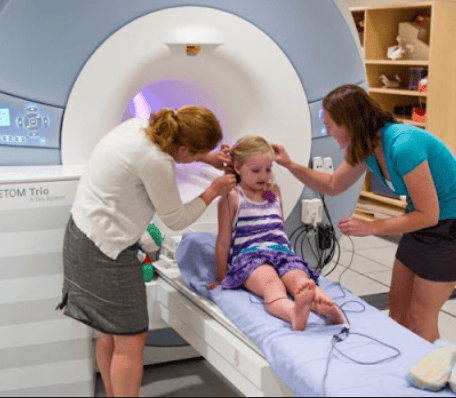
3. Causes of children falling and hitting their heads on the ground, causing injury
Falling to the ground is one of the most common injuries in toddlers. This is largely due to the child's stature and physical development. The baby's head is large and disproportionate, making it easy for the child to lose balance.Unstable fitness causes wobbly steps, putting children at risk when coming into contact with new, uneven surfaces or running fast to rush into fun objects.
In addition, children often tend to perform reckless actions such as climbing, jumping, trying to fly, which causes painful falls. Here's a list of culprits for head-to-head falls in children :
Slip in the tub Falling backwards Falling off a bed or changing table Falling on furniture or on a tabletop Falling in or getting out of the crib Hits carpet or an object on the floor Falling off a ladder Falls while learning to ride a bike Falling from a swing The distance from where you fell to the ground affects the severity of the fall. So, if a child falls from a great distance, the risk of serious injury is greater.
4. Types and symptoms of head injuries from falls
The term "head trauma" covers the entire spectrum of trauma, from a small tumor on the forehead to a traumatic brain injury. Most head injury-related falls in infants are of the “mild” category.4.1. Minor head injury
A mild head injury is an injury that does not cause damage to the brain. In these cases, bumps on the skin may appear without any other symptoms.If there is a tear in the skin that is causing bleeding, you need to take the child to the hospital for medical care, cleaning and stitches, even if there is no traumatic brain injury.
Newborns can't convey emotions verbally, instead, when they have headaches and discomfort, they'll show up with fussiness or trouble sleeping.
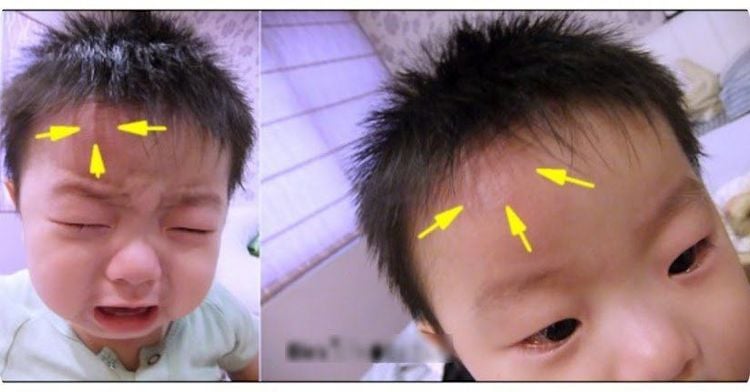
4.2. Moderate to severe head injury
Moderate to severe head injuries account for a low percentage of fall-related injuries in infants. They can be related to:Fractures of the skull Concussion (when the brain is bruised) Concussion (when the brain is shaken) Bleeding in the brain Concussion is the most common and least severe type of traumatic brain injury . It can affect multiple brain regions, causing problems with brain function. Signs of a concussion in a child include:
Headache Loss of consciousness While awake, while dreaming Nausea and vomiting Although rare, skull fractures can occur with manifestations of increased internal pressure skull, swelling, bruising, or bleeding around or inside the brain. In this case, the child needs urgent medical attention to minimize the risk of long-term brain damage.
5. Treatment of head injuries for children
For minor head injuries, families can take care of the child by applying ice, resting, cuddling, and caring for the child. After a concussion, your doctor may recommend that you monitor your child regularly and limit exercise.For more serious injuries, the family must follow the doctor's prescription. Depending on the condition of the injury, different treatment measures are applied such as medical treatment, surgery and physical therapy.
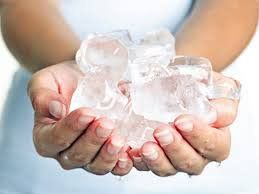
6. Are there any long-term effects after a child's head-on fall?
Most head-on falls in young children pose no risk of long-term complications. However, in a number of studies, scientists have linked traumatic brain injury (even minor trauma) with mental health problems, disability, and even death in adulthood.Another study in the US in 2018 showed that 39% of children with mild to severe traumatic brain injury had neuropsychiatric symptoms such as headache, psychosis, intellectual disability, depression, anxiety anxiety, convulsion. This is a message for families to rethink the seriousness of the problem and try to minimize the risk of falling and hitting their heads.
7. Tips to prevent head bangs and brain injuries in children
7.1. Infant
Newborns may unexpectedly fall off the bed or changing table. If a seat belt is not available, always keep one hand of your baby when placing him on the diaper changing table. Or consider changing your baby's diaper on the floor. Do not place your baby in a rocking chair placed on a table or high surface. Hyperactive children can remove the bar and fall to the ground. Baby walkers should not be used by young children because they can move quickly and crash into objects in the house, causing injury. When putting your baby in a stroller, make sure to wear a seat belt. When you release your hands from the car, you need to make sure that the brakes are applied, making sure that the items are not too much, causing the car to bounce backwards.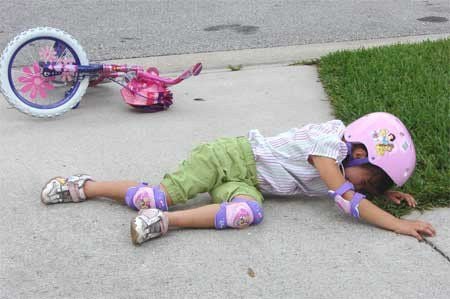
7.2. Children learn to walk
Create a well-ventilated space by removing items that can cause falls such as carpets, wires, etc. Wrap sharp corners of chairs and tables or move them away from children's play areas Use barriers or nets stair safety Use a full body harness when in a high chair or stroller Remove all toys that your baby can climb on and fall out of When your baby transitions from a crib to a bed, place a cushion on the floor to limit the danger of falling. When children are tired, the likelihood of falling will be higher. Therefore, you need to plan to rest and avoid exercise for children these days.7.3. Older children
Bunk beds should not be used by children under 9 years of age. Children should not be allowed to play on bunk beds. Make sure the bed upstairs has a railing. Lock windows or make sure doors open less than 100mm in multi-storey buildings so children can't climb out. Knives, scissors, and glassware are some of the sharp objects that can cause serious injury if a child falls. Therefore, these items should be kept out of the reach of children. Do not allow children to stand in strollers while shopping.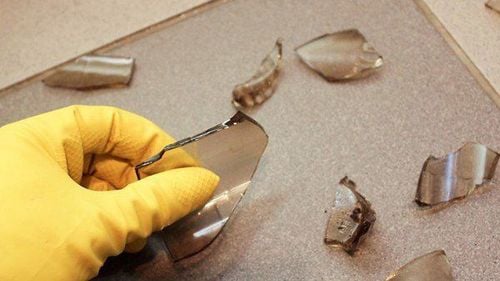
8. Preventing children from falling around the house
8.1. Slippery Area
Wet kitchen floors can cause falls in children. You need to clean up spills immediately. Encourage children to sit down to eat to limit overflow.The bathroom is also an easy place for children to fall. The best way to reduce the risk of falls is to make sure the bathtub, shower, and floor surfaces are slip-resistant with rubber mats.
Currently, on the market, there are many anti-slip product lines that families can consider choosing such as rubber paint, anti-slip concrete spray, floor mats, ...
8.2. Glass
Consider using safety glass or shatterproof film. Place children's belongings away from windows to avoid falling into the door and causing danger for children to reach.8.3. Balcony
Monitor children at all times when on the balcony and lock the entrance to the balcony, avoiding children using it as a play area. Make sure the balcony surface is non-slippery, eliminating all tripping hazards. Place the balcony furniture away from the railing to prevent children from using it to climb. Balcony furniture should be heavy to prevent children from moving them. When a child has abnormal signs of health, parents can take the child to Vinmec Health system for timely examination and treatment.As a key area of Vinmec Health System, Pediatrics Department - Vinmec International General Hospital always brings satisfaction to customers and is highly appreciated by industry experts thanks to the following advantages:
gathers a team of leading doctors and doctors in Pediatrics: including leading experts, with high professional qualifications (professors, associate professors, doctorates, masters), experienced, having worked in different hospitals. big hospitals like Bach Mai, 108.. The doctors are all well-trained, professional, have a heart - reach, understand young psychology. In addition to domestic pediatric specialists, the Department of Pediatrics also has the participation of foreign experts (Japan, Singapore, Australia, USA) who are always pioneers in applying the latest and most effective treatment regimens. . Comprehensive services: In the field of Pediatrics, Vinmec provides a series of continuous medical examination and treatment services from Newborn to Pediatric and Vaccine,... according to international standards to help parents take care of their baby's health from birth to childhood. from birth to adulthood Specialized techniques: Vinmec has successfully deployed many specialized techniques to make the treatment of difficult diseases in Pediatrics more effective: neurosurgery - skull surgery, stem cell transplantation. blood in cancer treatment. Professional care: In addition to understanding children's psychology, Vinmec also pays special attention to the children's play space, helping them to have fun and get used to the hospital's environment, cooperate in treatment, improve the efficiency of medical treatment.
Please dial HOTLINE for more information or register for an appointment HERE. Download MyVinmec app to make appointments faster and to manage your bookings easily.
References: rch.org.au; who.int; healthline.com






